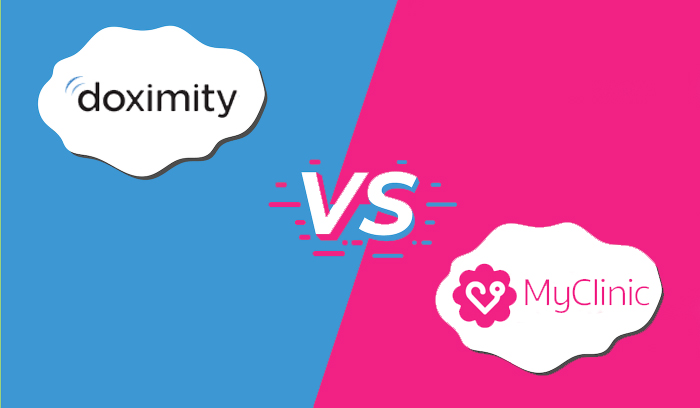Doximity Vs. MyClinic
Posted on |

Healthcare has struggled to utilise technology and modernise its ways. However, in the last decade, with the explosion of health tourism and increased patient demand, healthcare providers have had to engage with technology solutions to more efficiently manage the workload One area that has needed modernising is communicating with patients and between clinicians.
In 2011, Doximity was formed as a digital solution to address the communication issue and created a network between clinicians. Since then, the Doximity network has grown to such an extent that it has more members than the American Medical Association, bringing into the fold over 70% of medical doctors, alongside pharmacists, nurse practitioners, and physician assistants. However, with this infrastructure in place, it modernised itself further by trying to provide a true telemedicine experience to its members. Other telemedicine brands have also come to the forefront, one such network is the MyClinic one. Can the Doximity solution stand up to a dedicated telemedicine product like MyClinic?
Transitioning From a Doctors’ Network to Telemedicine
With its mass traction as a free collaboration enterprise, could the Doximity network serve as a telemedicine platform as well? After all, the Doximity app has been designed from the get-go as a communication platform that facilitates cooperation between doctors.
When it comes to telehealth as a whole, features that improve patient experience have to come first. The solution must be patient focussed. To answer the question if Doximity is a suitable platform for telemedicine, let’s first see what Doximity’s features are:
- Doximity is best described as a LinkedIn social network for physicians.
- While using Doximity is free, its software licensing, customization and maintenance costs can run up to $12,000 per user, per year for the basic software licensing package.
- Just the EMR — Electronic Medical Records — subscription costs around $500 per month.
- You can send and receive electronic faxes with Doximity (DoxFax), but only for verified physicians within the US.
- Has encrypted calls, but lacks SMS notification.
- Has a searchable directory of physicians, including their educational background, location, language proficiency, and medical specialization.
- You can organise video calls.
- The Doximity app can only be accessed if you are a verified medical professional.
- Its previously separated Doximity Dialer app — for making private calls — has been integrated within the main app.
Effectively, Doximity acts as a secure, lightweight version of Facebook or LinkedIn. However, due to elevated, HIPAA-compliant security protocols, you can’t use it to link with either Facebook or LinkedIn profiles. Nonetheless, the membership count of Doximity has grown to such a level that this is no longer necessary.
Doximity Underdeveloped Important Telemedicine Features
With all that said, the Doximity telemedicine solution lacks the key features necessary to have a smooth telemedicine experience, for both patients and doctors. These required features are:
- Virtual lobby
- Billing and scheduling without going outside the platform.
- SMS notification.
- File sharing.
- Greater focus on patients — MyClinic was founded by a doctor, not a graphics designer, as is the case with Doximity.
Despite the fact that Doximity has only recently introduced the feature of Dialer ID, to improve the interaction between clinicians and patients without divulging the clinicians personal phone number, it can not be considered as a dedicated telemedicine platform. Its main role as a doctor network remains significant to facilitate collaborations between physicians, but it is has no basis for a viable telehealth business model currently.
Doximity’s basic customization, integrating with up to 1–2 systems, would cost up to $2,500. Its full customization, integrating it with up to more than five systems, would incur a cost of $25,000.
On the other hand, by not limiting itself to a mobile app, MyClinic’s browser-based solution makes it universally accessible across all types of devices and operating systems, rendering it inherently compatible. This way, both patients and doctors can focus on what is important — healthcare. Seamless file-sharing, patient follow-up and SMS notifications represent key telehealth aspects that few others than MyClinic can boast of.
Furthermore, while Doximity’s Dialer feature has already diversified into Dialer Basic, Dialer Pro, and Dialer Enterprise, MyClinic has such tiers with a greater range of options. For example, with MyClinic’s enterprise solution, you can even receive a dedicated MyClinic domain URL, expert analytics and statistics of your telemedicine enterprise, custom branding and unlimited sessions.
In contrast, Doximity’s Dialer Enterprise merely extends Dialer access for all users within an organization, without extra customization benefits to draw in and maintain your pool of patients.
To try out some of these streamlined telemedicine features, visit MyClinic and schedule a free demo.
